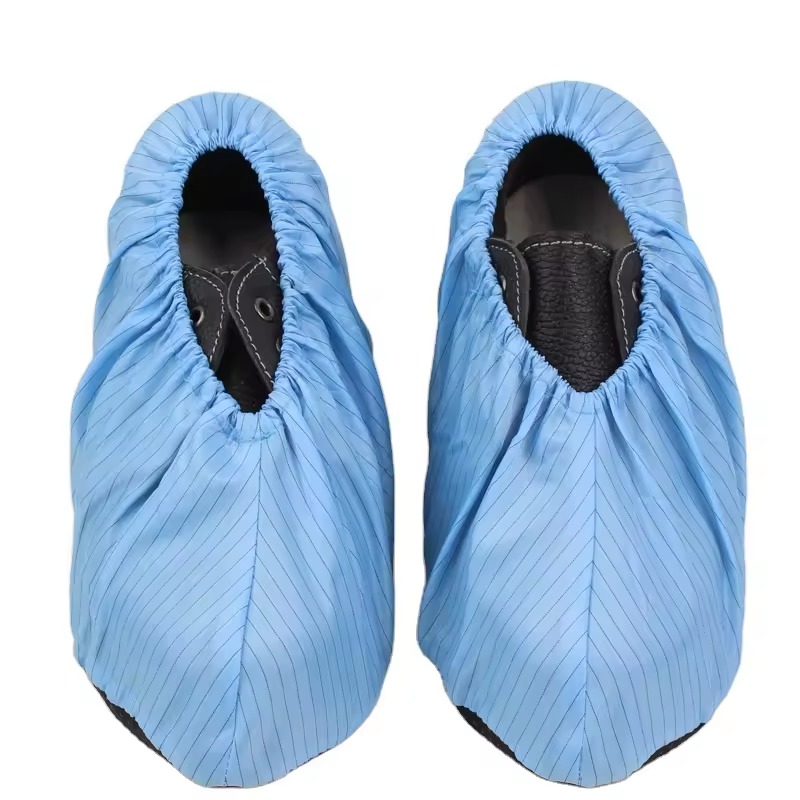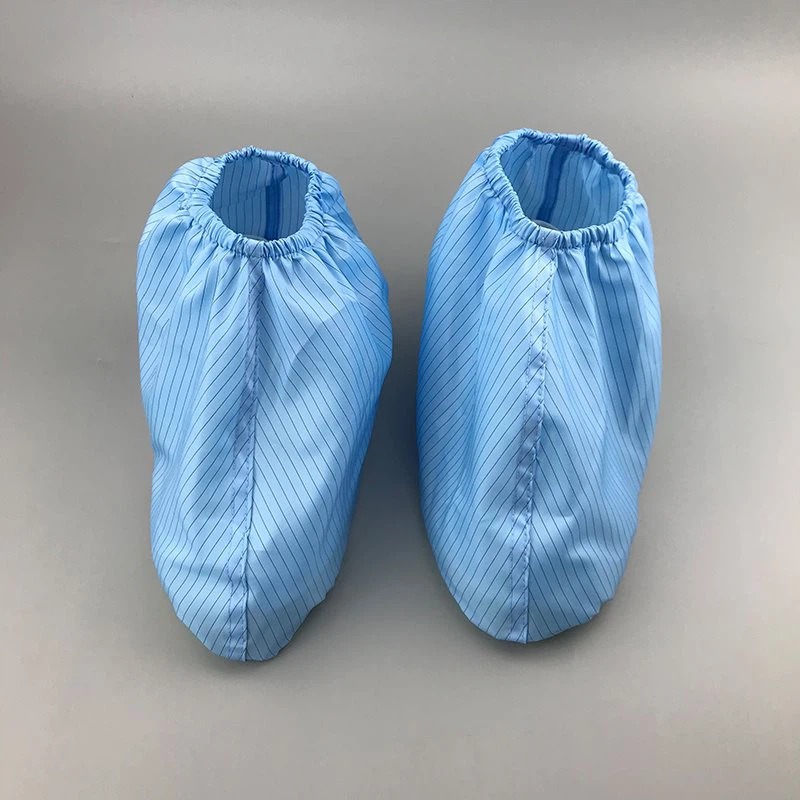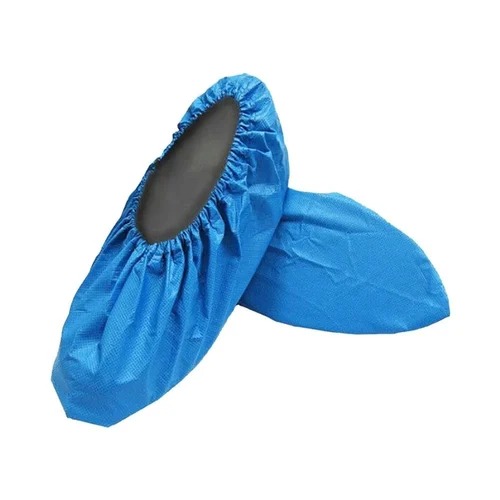DA NANG: 126 Dien Bien Phu, Thanh Khe, Da Nang
HO CHI MINH: 140 Vo Van Kiet, District 1, Ho Chi Minh
DA NANG: 126 Dien Bien Phu, Thanh Khe, Da Nang
HO CHI MINH: 140 Vo Van Kiet, District 1, Ho Chi Minh
ESD Shoe Covers provide reliable static control and contamination prevention by covering regular footwear, making them ideal for cleanrooms, electronics manufacturing, and laboratories.
In industries where electrostatic discharge (ESD) can cause serious damage, every detail of worker protection matters. While ESD flooring, wrist straps, and clothing are commonly used, footwear often gets overlooked. Not every worker wears ESD shoes all the time, and in many cases, facilities prefer a more cost-effective, disposable solution. This is where ESD shoe covers come in.
ESD shoe covers are designed to be worn over regular shoes, ensuring static control and contamination prevention in cleanrooms, laboratories, and electronics assembly areas. This article will explore their features, benefits, applications, and best practices to help organizations maintain a reliable static-control system.
ESD shoe covers are protective coverings made from conductive or dissipative materials that can be worn over standard footwear. They allow workers to enter static-sensitive environments without changing into specialized ESD shoes.
Typically made of polypropylene, non-woven fabric, or conductive film, ESD shoe covers feature carbon fiber threads or conductive coatings to ensure proper static dissipation. Many models also include anti-slip soles for added safety.

The primary function of ESD shoe covers is to safely conduct static charges from the worker’s body to the ground, preventing electrostatic discharge that can damage sensitive components.
Elastic bands or ties ensure that ESD shoe covers fit securely over different shoe types and sizes.
Many covers feature textured soles to improve grip and reduce the risk of slipping on smooth cleanroom flooring.
Compared to investing in ESD shoes for every worker, disposable covers are far more economical, especially for visitors or temporary staff.
Workers can wear their own shoes while still meeting ESD protection requirements, making shoe covers ideal for facilities with frequent visitors.
In addition to ESD protection, shoe covers reduce dust, dirt, and particle contamination, maintaining the cleanliness of sensitive environments.
ESD shoe covers help organizations comply with industry standards for static protection, such as ANSI/ESD S20.20 and IEC 61340.

ESD shoe covers are widely used in industries where both cleanliness and static control are critical:
In most cases, ESD shoe covers are used alongside ESD flooring to create a complete path-to-ground system.
While both serve the same purpose of grounding static charges, there are important differences:
Some facilities use a combination of both – permanent staff wear ESD shoes, while visitors or part-time workers use disposable shoe covers.

When selecting ESD shoe covers, consider the following:
For best results, pair shoe covers with other grounding accessories such as ESD wrist straps to ensure full protection.
ESD shoe covers are a practical, cost-effective solution for static protection and contamination control. They allow workers and visitors to maintain ESD compliance without the need for permanent ESD shoes, making them ideal for cleanrooms, electronics assembly, and laboratories.
By combining ESD shoe covers with ESD flooring, ESD shoes, and ESD wrist straps, companies can build a reliable and comprehensive electrostatic discharge protection system.
Whether disposable or reusable, ESD shoe covers are an essential part of maintaining product quality, worker safety, and compliance in today’s high-tech industries.
Anti-Static Shoes and Slippers
Anti-Static Shoes and Slippers
Anti-Static Shoes and Slippers
Anti-Static Shoes and Slippers
Anti-Static Shoes and Slippers
Anti-Static Shoes and Slippers
Anti-Static Shoes and Slippers
Anti-Static Shoes and Slippers
Reviews
There are no reviews yet.